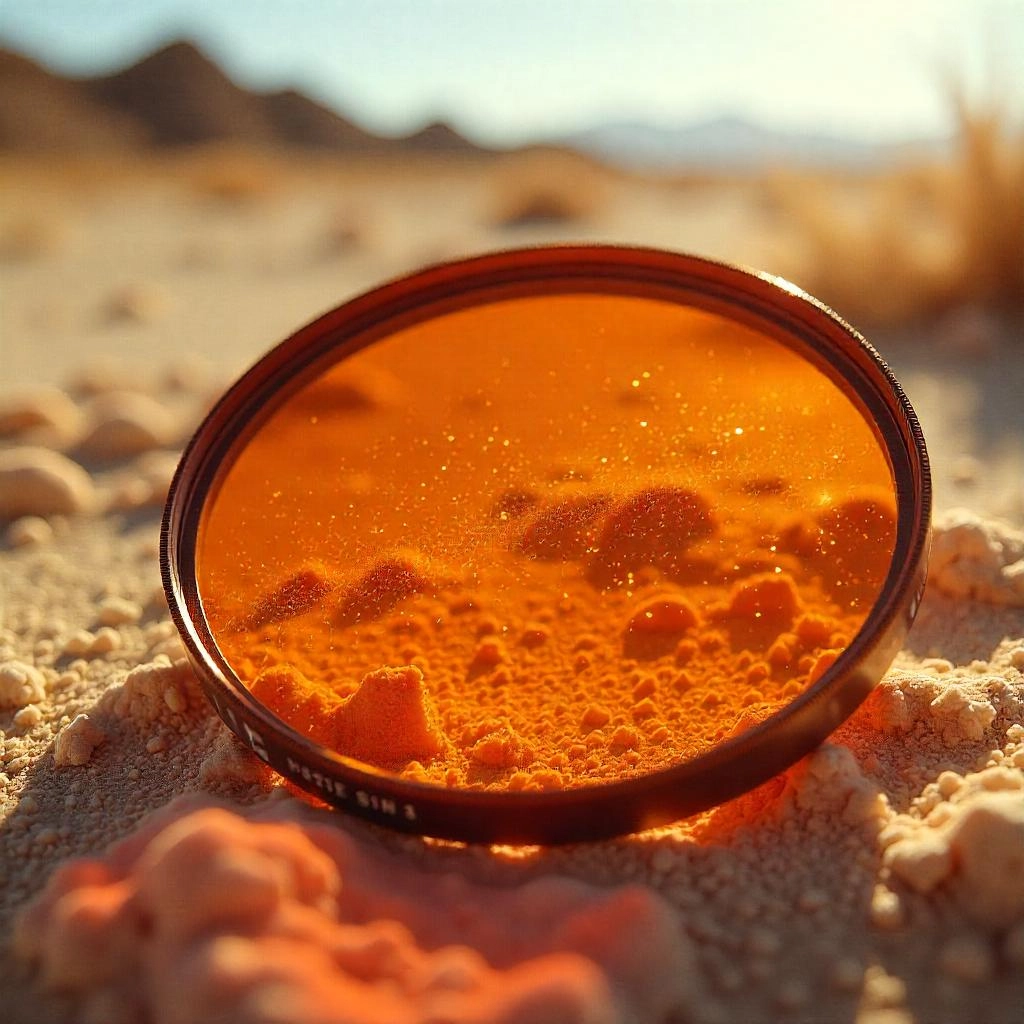Infrared filters are crafted parts that are essential in many different uses, such as gas detection systems and infrared temperature monitoring equipment, and surveillance setups. These filters are part of components to infrared features, and their “tiny lenses” hold valuable insights. Failing to upkeep these filters over time can bring about potential dangers. The buildup of dust on the filter may hinder the passage of light, affecting the effectiveness of optical systems. Moreover, exposure to dampness might lead to oxidation on the filters’ coating, which can weaken their
How Does Regular Care Enhance Optical Performance?
Consistent upkeep is key to keeping filters clean from particles like dust and smudges that may scatter light and decrease efficiency in transmitting signals effectively. In Beijing Bodian Optical Technology Co., Ltd., this is crucial for industries demanding accuracy, such as aerospace or healthcare technologies. Infrared filters heavily rely on optical principles and go through thorough research and meticulous design processes before being perfected using advanced automated tools, with high precision. Keeping them guarantees these intricately crafted parts function at their best capacity.
Additionally, regular check-ups help in spotting signs of wear and tear that may not be apparent until they start impacting the performance. By taking care of problems, with proper maintenance, people can prolong the life of their filters and keep their optical systems dependable.
How Should You Clean Infrared Filters Without Causing Damage?
Which Cleaning Tools Are Most Effective for Delicate Surfaces?
When it comes to cleaning filters properly it’s essential to use tools that are made for delicate optical surfaces. Experts often suggest using microfiber cloths because of their touch and effectiveness in eliminating dust without causing any scratches. If there are residues or smudges that won’t budge it’s best to use lens cleaning solutions created specifically for optical parts but remember to apply them with caution and, in moderation.
Another useful method for getting rid of dirt without touching the surface is by using air cans safely from a distance to avoid damaging any coatings with excessive force application. Anti-static brushes are also great for dust removal and preventing buildup that could draw in additional particles.
What Steps Should Be Followed During the Cleaning Process?
To clean an infrared filter effectively:
Begin by blowing off loose dust using compressed air.
Use a microfiber cloth lightly moistened with an appropriate lens cleaning solution for removing smudges.
Gently wipe in circular motions from the center outward to avoid spreading contaminants.
Avoid applying excessive pressure during cleaning, as this could damage coatings or scratch the surface.
Inspect under proper lighting conditions to ensure all residues have been removed.
It’s really important to avoid using substances or regular household cleaning products because they could harm the delicate layers of the filter permanently.
How Can Storage Impact the Longevity of Infrared Filters?
What Are the Ideal Conditions for Storing Optical Components?
Storing filters correctly is crucial to maintain their effectiveness and durability over time. It’s best to keep these components in an dry place that is shielded from direct sunlight and drastic temperature changes. Managing humidity levels is especially key since excess moisture can cause corrosion or the growth of fungi, on the surfaces.
When you store or transport filters in cases with soft linings and use desiccant packets inside storage containers to lower humidity levels, you further protect them from damage during storage or transportation.
How Does Dust and Moisture Affect Filter Efficiency?
Specks of dust resting on the surface of a filter can scatter the light waves that come in and cause a decrease in how efficiently the light passes through it; this may lead to inaccuracies in measurements for applications that rely on precision, like environmental sensors and night vision equipment. Devices like sensors and curtain sensors, and other tools essential in industries such as environmental conservation, farming, business, and national security operate effectively based on this fundamental principle.
Moisture can create a risk as it encourages the oxidation of metal coatings or the separation of multiple layers vital to the designs of various infrared filters. Numerous infrared materials are available for use as absorption filters that transmit shortwave radiation. Over time, these impacts can negatively affect both the quality and structural resilience of the filters.
Through following storage methods and maintaining equipment regularly, as mentioned earlier. Like utilizing appropriate cleaning instruments. Individuals can enhance efficiency and longevity in a wide range of uses that feature advanced optics equipment similar to what is utilized in automotive safety surveillance systems or national defense technologies. This product is utilized across sectors, including gas detection and infrared temperature measurement, in fields such as infrared detection and imaging tools used in automotive, healthcare, electronics, safety monitoring, as well as aerospace and national defense applications.
Are There Specific Handling Practices to Protect Infrared Filters?
Why Should You Minimize Direct Contact with Filter Surfaces?
Minimize contact with infrared filters to maintain their structural and functional integrity, as they are delicate components sensitive to infrared features, and their “tiny lenses” hold valuable knowledge within them. The filters are designed with coatings and multiple layers that enhance their optical capabilities. Touching the surface with hands or any physical contact can lead to the deposition of oils or residues that could reduce the efficiency of the filter in transmitting light effectively.
Improper handling can cause scratches that may affect the accuracy of these filters significantly in the spectrum, where filters typically have multiple layers to bridge the stop band to the closest absorption filter edge required for optimal function. Any harm to these layers can result in light scattering or absorption that is not intended and may diminish their efficiency in devices such as gas analyzers or surveillance cameras.
How Can You Safely Install and Remove Filters?
It’s really important to handle filters carefully during both installation and removal to make sure they last a long time! When you’re working with filters like these, it’s best to use gloves or tweezers made for optical stuff so you don’t touch the parts directly with your fingers or hands. When you’re putting a filter in place, make sure it’s fitting nicely in its holder without pushing hard to avoid putting too much pressure that could damage the filter.
When removing the filter make sure to use tools that offer a hold without causing any scratches or bends on it. It’s crucial to check the mounting area, for any debris before putting in a filter or reinstalling the old one. Leaving any particles behind can lead to pressure points forming that could potentially cause cracks or harm the filter in the run.
Can Routine Inspections Help Detect Early Signs of Wear?
How Often Should You Inspect Your Equipment?
The frequency of checks required varies based on the setting and usage of the machinery. For applications such as aerospace tools or medical devices, it might be crucial to conduct inspections on a weekly basis to maintain peak performance. In rigorous scenario,s checking once a month could be adequate.
Throughout every inspection session make sure to evaluate both the state and operational effectiveness of the filter. Optimal lighting conditions are essential for spotting flaws such as tiny scratches or irregularities, in the coating that could easily be missed otherwise.
FAQs
How do advanced coating technologies improve infrared filter performance?
Enhancing Optical Transmittance
By precisely controlling the thickness and materials of coating layers, the transmittance of infrared optical filters in specific wavelength bands can be significantly improved. For instance, in infrared detectors, the application of anti-reflection coatings can substantially boost transmittance. For example, at a wavelength of 8.86 μm, the transmittance of a GaSb substrate thin film can be increased by 27%.
Strengthening Wavelength Selectivity
Advanced coating technologies enable the design of filters with high selectivity, such as narrowband filters with bandwidths less than 50 nm. These filters are tailored to match gas absorption peaks, like the 4.26 μm absorption of CO₂, enabling highly selective detection. This precise wavelength control allows the filters to accurately extract target signals in complex spectral environments.
Improving Environmental Tolerance
The adoption of advanced techniques such as ion beam-assisted deposition can enhance the density and adhesion of coatings, thereby improving the durability of optical filters. This improvement enables the filters to maintain stable performance in harsh environments with high temperatures, high humidity, or strong ultraviolet radiation, reducing performance degradation caused by environmental factors.
Supporting Complex Optical Designs
Modern coating technologies like atomic layer deposition (ALD) allow for precise control of single-layer film thicknesses down to a fraction of a nanometer, supporting the design of complex multi-layer film systems. This capability enables filters to integrate more functional layers, such as simultaneously achieving anti-reflection, wavelength selection, and protection functions, meeting the demand for multifunctional optical components in high-end applications.
Promoting Miniaturization and Integration
Advanced coating processes are compatible with micro- and nano-fabrication technologies, allowing for the direct preparation of thin-film filters on chip surfaces. This integrated design not only reduces the volume of optical systems but also enhances the coupling efficiency between filters and components like detectors and sensors, providing technical support for the development of miniaturized optical devices.



